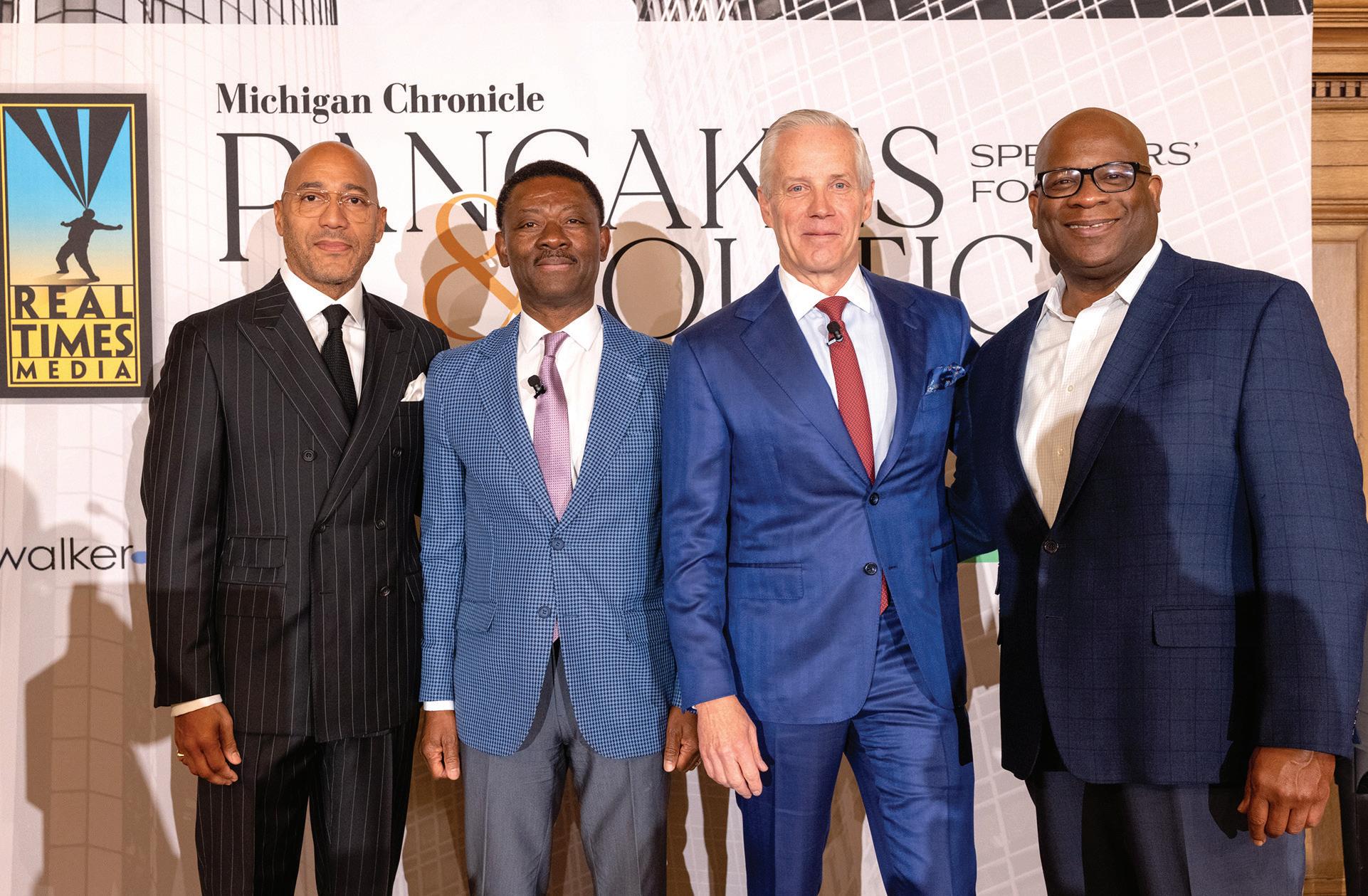
3 minute read
St. Philip's Lutheran Church Historic Ties with Detroit's Black Community
The fifth in a Monthly Series of Feature Stories About the Community Sponsored by the Knight Foundation
By Donald James Senior Writer, Real Times Media
In the early 1900s, African Americans from the South were migrating to Detroit in record numbers, hoping to find a better life powered by the city’s booming automobile manufacturing industry. From 1910 to 1930, Detroit’s Black population skyrocketed from 5,000 to 120,000 – and continued to soar.
As African Americans arrived, they found the necessity to practice their faith and religious beliefs through worship services, much like they had experienced in Black churches across the South. Among those seeking to continue their worship experiences in Detroit included an increasing number of Lutheran Black families, many coming from Alabama.
While living in the city’s neighborhood of Black Bottom, a handful of Black Lutheran families started holding rotating church services in their homes in the early 1930s. In 1934, the congregation of families began worshipping as St. Philip’s Lutheran Church, officially becoming Michigan’s first Black Lutheran house of worship.
As the congregation grew, they moved to a small one-room apartment on E. Warren and St. Antoine, just south of the North End. The constant growth of the church prompted another move in 1937, this time to North End’s Sherrard Junior High School on E. Euclid at Cameron.
According to research conducted and documented by the historian and longtime member of St. Philip’s Lutheran Church, William Broyles Jr., the church ultimately moved again to a vacant Jewish Synagogue on the North End’s King St., east of Oakland Ave.
“Whites began to leave the area between 1930 and 1936 with Jewish merchants remaining until the 1940s,” Broyles wrote in his historical account of St. Philip’s and the North End. “After the race riot of 1943, many of the remaining businesses that were looted and Jewish merchants slowly moved away.”
Broyles also wrote that St. Philip’s, while located on King St., was the subject of an article written and published by the Michigan Chronicle on the church’s 10th anniversary in 1944. The Michigan Chronicle, founded eight years earlier, cited the church’s expansion dilemma.
“The pastor and officers of St. Philip’s are presently concerned with a grave but welcomed problem about what to do about the membership that has outgrown the size of the present church,” Broyles documented what the Chronicle wrote in 1944.
Nevertheless, in the fall of ‘44, the church started St. Philip’s Day School (St. Philip’s Lutheran School) in the basement of its King St edifice, reportedly with one teacher and 12 students. With this small but significant development, St. Philip’s Lutheran School became Michigan’s first Lutheran educational institution for Black students. With a mounting reputation for its teaching excellence rooted in Christian principles, St. Philip’s population of students grew over the ensuing decade.
In the 1950s, St. Philip’s Lutheran Church and its elite private school moved to a new building on the southern edge of the North End, located at 2884 E. Grand Blvd. near Oakland Ave., where the church is still located.
“It was a school that my parents felt was excellent for me to attend for the 5th, 6th and 7th grades in the early 1960s,” said Rev. Dennis Talbert., who grew up in the North End community, and is a board member of the North End Youth Improvement Council. “For me, I was just going to the church’s school and learning a lot.”
“A critical reason why many parents wanted to send their children to St. Philip’s Lutheran School was because it was created as a private school for Black students,” he said. “St. Philip’s was building Black leaders.”
Talbert said that some of the students who attended the school were the “children or relatives” of prominent Black families in Detroit. Such families were headed by Berry Gordy (founder of Motown Records); Dr. Wendell Cox, Dr. Haley Bell and Dr. Robert Bass (founders of legendary Black radio stations WCHB, WCHD, and WJZZ); and Violet Lewis (founder of Lewis Business College, Michigan’s only HBCU).

St. Philip’s alums include such luminaries as Dr. L. Kimberly Peoples, former principal of Golightly Education Center in Detroit; the late Jewel Ware, former chair of the Wayne County Commission; actress Denise Gordy; Corie Pauling, president and CEO of the University of Michigan Alumni Association; Chris Jackson, prominent developer, co-principal and managing partner of Queen Lillian; New York Times best-selling author and Vanderbilt University writer-in-residence Alice Randall; and Kelli Van Buren, dean of Education, Arizona College of Nursing.
At its peak in a school year, St. Philip’s taught almost 400 students across various elementary and middle school grades. Unfortunately, the pri-









